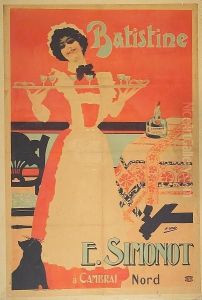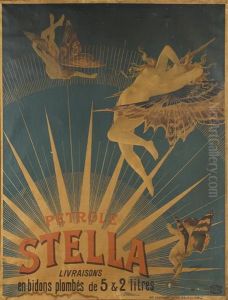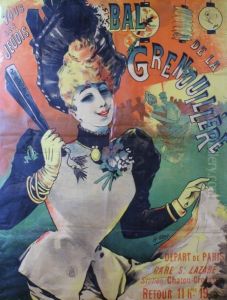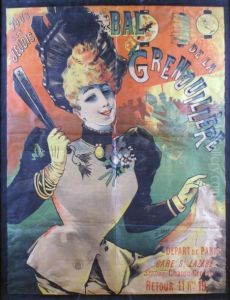Henri Gray Paintings
Henri Gray, born Henri Boulanger in 1858, was a notable French artist, primarily recognized for his work as a lithographer and poster artist. While less known than some of his contemporaries, Gray's contributions to the world of art, particularly in the realm of advertising and poster design, showcase his unique talent and innovative approach to visual communication during the late 19th and early 20th centuries.
Gray's early life and education in the arts remain somewhat obscure, reflecting the era's limited documentation of artists who didn't ascend to the highest echelons of fame. However, what is known is that he immersed himself in the vibrant Parisian art scene, a cultural hub that attracted artists from across the globe. This exposure influenced his artistic development, intertwining with the broader movements of Art Nouveau and the burgeoning field of commercial art.
Throughout his career, Henri Gray demonstrated a remarkable ability to blend traditional techniques with emerging trends. His lithographs often featured bold compositions, vibrant colors, and a dynamic use of space, characteristics that made his work stand out in the competitive world of advertising. Gray's posters frequently advertised theatrical productions, exhibitions, and consumer products, capturing the essence of the Belle Époque's opulence and its appetite for leisure and consumption.
Despite his prowess and the quality of his work, Henri Gray did not achieve the lasting fame of some of his peers, such as Jules Chéret or Henri de Toulouse-Lautrec, whose names became synonymous with the era's poster art. Nonetheless, Gray's contributions have garnered appreciation from collectors and art historians, who recognize his work's aesthetic and historical value. His posters not only served commercial purposes but also captured the spirit of an era that celebrated art in all aspects of life.
Henri Gray passed away in 1924, leaving behind a legacy encapsulated in the vibrant posters that continue to be admired for their artistic merit and historical significance. His work provides insight into the commercial art scene of Paris in the late 19th and early 20th centuries, reflecting the societal trends, cultural preferences, and technological advancements of his time.



